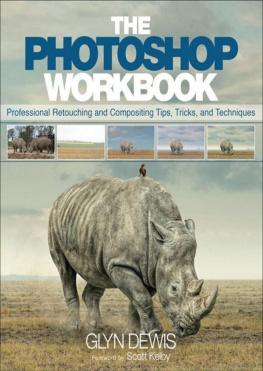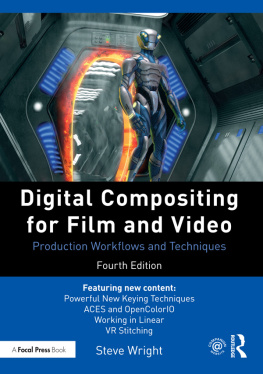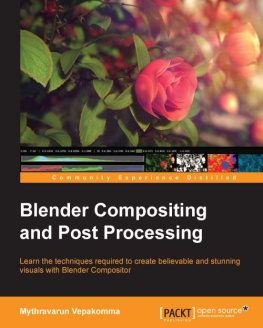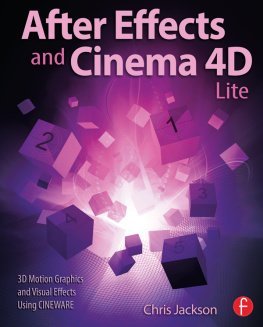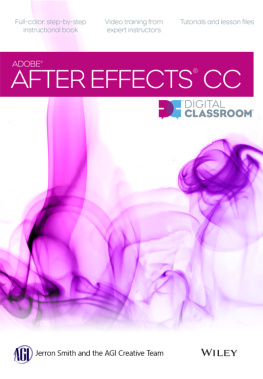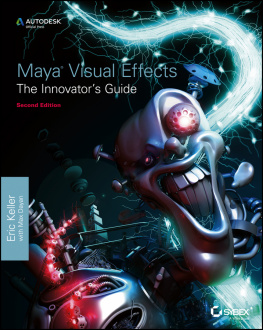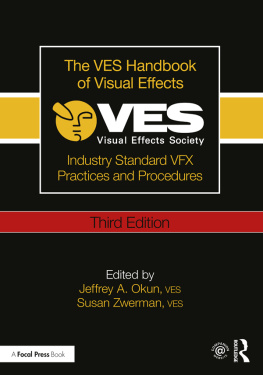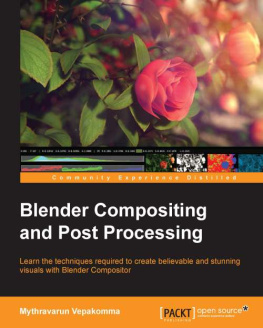Ron Ganbar - Nuke 101: Professional Compositing and Visual Effects
Here you can read online Ron Ganbar - Nuke 101: Professional Compositing and Visual Effects full text of the book (entire story) in english for free. Download pdf and epub, get meaning, cover and reviews about this ebook. year: 2011, publisher: Pearson Education, genre: Computer. Description of the work, (preface) as well as reviews are available. Best literature library LitArk.com created for fans of good reading and offers a wide selection of genres:
Romance novel
Science fiction
Adventure
Detective
Science
History
Home and family
Prose
Art
Politics
Computer
Non-fiction
Religion
Business
Children
Humor
Choose a favorite category and find really read worthwhile books. Enjoy immersion in the world of imagination, feel the emotions of the characters or learn something new for yourself, make an fascinating discovery.

- Book:Nuke 101: Professional Compositing and Visual Effects
- Author:
- Publisher:Pearson Education
- Genre:
- Year:2011
- Rating:5 / 5
- Favourites:Add to favourites
- Your mark:
- 100
- 1
- 2
- 3
- 4
- 5
Nuke 101: Professional Compositing and Visual Effects: summary, description and annotation
We offer to read an annotation, description, summary or preface (depends on what the author of the book "Nuke 101: Professional Compositing and Visual Effects" wrote himself). If you haven't found the necessary information about the book — write in the comments, we will try to find it.
Ron Ganbar: author's other books
Who wrote Nuke 101: Professional Compositing and Visual Effects? Find out the surname, the name of the author of the book and a list of all author's works by series.
Nuke 101: Professional Compositing and Visual Effects — read online for free the complete book (whole text) full work
Below is the text of the book, divided by pages. System saving the place of the last page read, allows you to conveniently read the book "Nuke 101: Professional Compositing and Visual Effects" online for free, without having to search again every time where you left off. Put a bookmark, and you can go to the page where you finished reading at any time.
Font size:
Interval:
Bookmark:
Professional Compositing and Visual Effects
Nuke 101
Professional Compositing and Visual Effects
Ron Ganbar
Peachpit Press
1249 Eighth Street
Berkeley, CA 94710
510/524-2178
Fax: 510/524-2221
Find us on the Web at www.peachpit.com
To report errors, please send a note to
Peachpit Press is a division of Pearson Education
Copyright 2011 by Ron Ganbar
Senior Editor: Karyn Johnson
Development Editor: Corbin Collins
Production Editor: Cory Borman
Technical Editor: Mark Christiansen
Copyeditor: Kelly Kordes Anton
Proofreader: Scout Festa
Indexer: Valerie Haynes Perry
Interior Design and Composition: Kim Scott, Bumpy Design
Cover Design: Charlene Charles-Will
Cover Illustration: Alicia Buelow
Cover images:Adrenalin Lemmings (2008) by Crew 972, www.crew972.com
Notice of Rights
All rights reserved. No part of this book may be reproduced or transmitted in any form by any means, electronic, mechanical, photocopying, recording, or otherwise, without the prior written permission of the publisher. For information on getting permission for reprints and excerpts, contact .
Footage from Adrenalin Lemmings used with permission from Crew 972. 2008 Crew 972, www.crew972.com. All rights reserved.
Footage from This is Christmas, directed by Alex Norris, www.alexnorris.co.uk
Keying footage (
Pan and Tile panorama footage (
Notice of Liability
The information in this book is distributed on an As Is basis without warranty. While every precaution has been taken in the preparation of the book, neither the author nor Peachpit shall have any liability to any person or entity with respect to any loss or damage caused or alleged to be caused directly or indirectly by the instructions contained in this book or by the computer software and hardware products described in it.
Trademarks
Many of the designations used by manufacturers and sellers to distinguish their products are claimed as trademarks. Where those designations appear in this book, and Peachpit was aware of a trademark claim, the designations appear as requested by the owner of the trademark. All other product names and services identified throughout this book are used in editorial fashion only and for the benefit of such companies with no intention of infringement of the trademark. No such use, or the use of any trade name, is intended to convey endorsement or other affiliation with this book.
ISBN-13: 978-0-321-73347-4
ISBN-10: 0-321-73347-9
9 8 7 6 5 4 3 2 1
Printed and bound in the United States of America
I dont always like writing, but I very much like having written.
William Gibson
The Foundrys Nuke is fast becoming the industry leader in compositing software for film and TV. Virtually all the leading visual effects studiosILM, Digital Domain, Weta Digital, MPC, Framestore, The Mill, and Sony Pictures Imageworksnow use Nuke as their main compositing tool. This is not surprising, as Nuke offers a flexible node-based approach to compositing, has a native multi-channel workflow, and boasts a powerful integrated 3D compositing environment that delivers on the artists needs.
Nuke was first developed as the in-house compositing tool at Digital Domain, the visual effects studio behind the Terminator series, The Fifth Element , Tron: Legacy , The Curious Case of Benjamin Button , and other major films. The software has been developed by artists for artists to meet the immediate needs of actual top-level productions. Nuke is now developed by The Foundry (www.thefoundry.co.uk), which remains committed to making Nuke the best tool for compositing artists working in the trenches.
Learning Nuke is a must for visual effects artists who want to master high-end compositing techniques and artistry. My goal with this book is to get you up-and-running with the program and give you the skills you need for doing your own compositing projects in Nuke.
This book is for anyone interested in learning Nuke. Whether youre an artist experienced in using Adobe After Effects, Autodesk Flame, Apple Shake, or Eyeon Fusion, or you only have a basic understanding of compositing and image manipulation concepts, this book will guide you through the necessary theory and practice you need to use Nukefrom a basic level to Nukes more advanced toolset.
This book was written as a series of lessons, each focusing on a part of the interface, a tool, or a technique. and onwards, advanced tools and techniques are explained.
This book teaches how to use Nuke from its very basic interface to its very advanced toolsets, including the 3D engine, Camera Projection, and Camera Tracking. Although the book teaches a fair amount of compositing theory, there is not enough space here to cover that topic in depth. Some of the theory discussed in this book may be new to you, but my intention is to cover just enough to understand how to use Nuke. If you want to dive further into the theory, two of my favorite books are Ron Brinkmanns The Art and Science of Digital Compositing and Steve Wrights Digital Compositing for Film and Video .
As you advance through the chapters in this book, the later lessons rely on knowledge you learned in the previous lessons. , and so on. Because of this, I recommend completing the exercises in the chapters in order.
In the book you will find explanatory text and numbered steps. Ideally, you should complete each numbered step exactly as it is writtenwithout doing anything else (such as adding your own steps). Following the steps exactly as written will give you a smooth experience. Not going through the steps as they are written might result in the next step not working properly, and could well lead to a frustrating experience. Each series of steps is also designed to introduce you to new concepts and techniques. As you perform the steps, pay attention to why you are clicking where you are clicking and doing what you are doing, as that will truly make your experience a worthwhile one.
You can use this book on your own through self-study or in a classroom.
Using the book for self-study: If youre reading this book at your own pace, follow the instructions in the previous paragraph for your first read-through of the chapters. However, as you are not limited by any time frame, I recommend going through chapters a second time, trying to do as much of the work without reading the steps. Doing so can help you better understand the concepts and tools being taught. Also, the book leaves a lot of room for further experimentation. Feel free to use the tools youre learning to take your compositions further the second time you run through a chapter.
Using the book in a classroom setting: You can use this book to teach Nuke in a classroom. As a course, the material is designed to run for roughly 40 hours, or five eight-hour days. I suggest the trainer run through a chapter with the students listening and writing down notes, explaining the steps as they are shown on-screen to the class while taking questions and expanding on the text where necessary. Once a chapter has been presented from start to finish, give students time to run through the same chapter on their own in the classroom in front of a computer, using the book to read the instructions and follow the steps. This second pass will reiterate everything the trainer has explained and, through actual experience, show the students how to use the software with the trainer still there to answer questions and help when things go wrong.
Font size:
Interval:
Bookmark:
Similar books «Nuke 101: Professional Compositing and Visual Effects»
Look at similar books to Nuke 101: Professional Compositing and Visual Effects. We have selected literature similar in name and meaning in the hope of providing readers with more options to find new, interesting, not yet read works.
Discussion, reviews of the book Nuke 101: Professional Compositing and Visual Effects and just readers' own opinions. Leave your comments, write what you think about the work, its meaning or the main characters. Specify what exactly you liked and what you didn't like, and why you think so.

